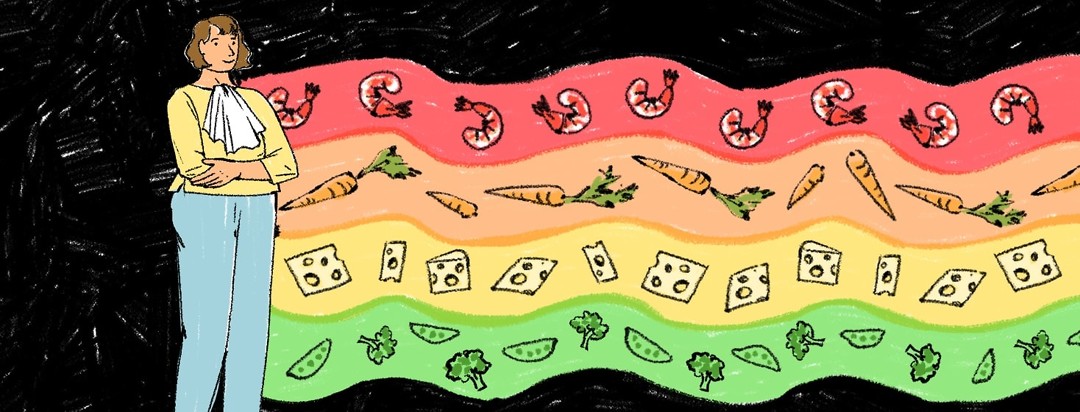Eat Your Colors!
I love eating and I love food. My email inbox gets a daily dose of recipes from newspapers and food magazines. When we travel, I’m the one who tries whatever the locals are eating.
Living in Washington, DC for more than 30 years I had access to cooking around the world from Ethiopian to Vietnamese. Political upheaval overseas meant a new restaurant at our doorstep. One of the first things an immigrant community would do was recreate the tastes of home.
Macular degeneration and food
My macular degeneration has opened the same opportunity.
I’ve started combing the internet for ideas on how to include foods rich in nutrients that support eye health: beta carotene; leutein/zaxanthin; Omega-3 fatty acids; vitamins A, C, D, and E; and zinc. And to control my weight.
Finding recipes
The first place I looked was the American Macular Degeneration Foundation and their project and cookbook, Eat Right for Your Sight. I love their carrot-cumin soup!
Taste the rainbow (of fruits, veggies, and more)
Next, I upped my veggie intake. “Eat Your Colors!” was a campaign by the U.S. Department of Agriculture to encourage kids to eat more fruits and vegetables. It became my mantra.
My goal: Five colorful fruits and vegetables every day. Sweet potatoes, asparagus, blueberries, raspberries, chard, tomatoes, kale.
The brighter in color the better. Lots of salmon. Salmon is a fish and a color. Brown came from brown rice and whole-grain bread, seeds, and nuts. White slipped in with onions and dairy.
What's the secret to cooking eye-healthy veggies?
Here’s a secret. Vegetables do not have to be boring. I grew up in the Midwest back when the preferred way to cook green beans was to boil them to death with a bit of bacon. The beans ended up as pale as the bacon. Sweet potatoes were served swimming in butter, syrup and maybe marshmallows.
Flavor and freshness were not high on my mother’s cooking agenda.
Roast your veggies
Nutrient-packed vegetables can be so tasty that they can be the centerpiece of your dinner plate. In fact, many nutritionists say that they say take up half the plate with the protein and “starch” the other half.
Here’s my go-to for transforming boring broccoli, brussels sprouts, carrots into appetizing dishes: roast them. No recipe needed, really. Just a willingness to experiment.
- Preheat the oven to 375F. Line a baking sheet with aluminum foil.
- Cut into bite-size bits. Maybe an inch long for the carrots; no need to peel. Brussels sprouts get the tough end trimmed. Broccoli florets should be bigger than smaller.
- Spread in a layer on the foil-lined pan. Drizzle with olive oil or avocado oil.
- Season with salt (not iodized) and pepper. You can try Cajun (or another) seasoning for a bit of spice.
- Move them around a bit several times so all sides get coated with the oil and spices.
- Bake until the veggies are soft. Serve.
The idea is to get more of those nutrients into your life. My mottos: Eat Your Colors and Healthy Does Not Mean Boring.
PS: There’s a new Korean restaurant in town I’m looking forward to visiting.

Join the conversation